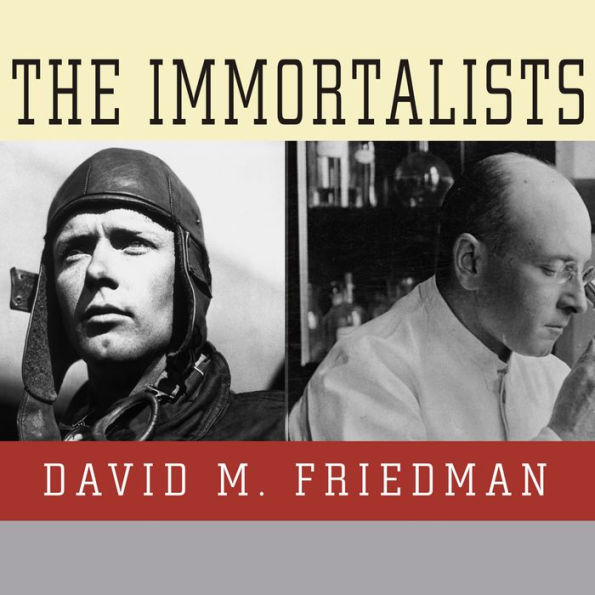In The Immortalists, the journalist David M. Friedman rescues this remarkable tale from the footnotes of history, arguing that Carrel and Lindbergh were secretly chasing after eternal life—but only for the right sort of people.
—The New York Times
The Immortalists is the fascinating story of the friendship and extraordinary scientific collaboration of two prodigious men: Charles Lindbergh, once the most famous person in the world, and Dr. Alexis Carrel, the Nobel Prize winner regarded by many as the most brilliant surgeon who ever lived.
Lindbergh and Carrel met not long after Lindbergh's "victory lap" around the world, which followed his historic solo flight from New York to Paris in 1927. Fueled by their shared goal to find a scientific path to life without death, they spent five years in Carrel's laboratory at the Rockefeller Institute for Medical Research in New York, where they secretly built a machine that could keep organs alive outside the bodies that created them. This device was the forerunner of today's artificial heart and heart-lung machine.
Although they obviously failed in their ultimate quest, Lindbergh and Carrel's experiments established them as two of the most ambitious thinkers in modern history, as well as unacknowledged pioneers of biotechnology.
1101911724
Lindbergh and Carrel met not long after Lindbergh's "victory lap" around the world, which followed his historic solo flight from New York to Paris in 1927. Fueled by their shared goal to find a scientific path to life without death, they spent five years in Carrel's laboratory at the Rockefeller Institute for Medical Research in New York, where they secretly built a machine that could keep organs alive outside the bodies that created them. This device was the forerunner of today's artificial heart and heart-lung machine.
Although they obviously failed in their ultimate quest, Lindbergh and Carrel's experiments established them as two of the most ambitious thinkers in modern history, as well as unacknowledged pioneers of biotechnology.
The Immortalists: Charles Lindbergh, Dr. Alexis Carrel, and Their Daring Quest to Live Forever
The Immortalists is the fascinating story of the friendship and extraordinary scientific collaboration of two prodigious men: Charles Lindbergh, once the most famous person in the world, and Dr. Alexis Carrel, the Nobel Prize winner regarded by many as the most brilliant surgeon who ever lived.
Lindbergh and Carrel met not long after Lindbergh's "victory lap" around the world, which followed his historic solo flight from New York to Paris in 1927. Fueled by their shared goal to find a scientific path to life without death, they spent five years in Carrel's laboratory at the Rockefeller Institute for Medical Research in New York, where they secretly built a machine that could keep organs alive outside the bodies that created them. This device was the forerunner of today's artificial heart and heart-lung machine.
Although they obviously failed in their ultimate quest, Lindbergh and Carrel's experiments established them as two of the most ambitious thinkers in modern history, as well as unacknowledged pioneers of biotechnology.
Lindbergh and Carrel met not long after Lindbergh's "victory lap" around the world, which followed his historic solo flight from New York to Paris in 1927. Fueled by their shared goal to find a scientific path to life without death, they spent five years in Carrel's laboratory at the Rockefeller Institute for Medical Research in New York, where they secretly built a machine that could keep organs alive outside the bodies that created them. This device was the forerunner of today's artificial heart and heart-lung machine.
Although they obviously failed in their ultimate quest, Lindbergh and Carrel's experiments established them as two of the most ambitious thinkers in modern history, as well as unacknowledged pioneers of biotechnology.
20.49
In Stock
5
1

The Immortalists: Charles Lindbergh, Dr. Alexis Carrel, and Their Daring Quest to Live Forever

The Immortalists: Charles Lindbergh, Dr. Alexis Carrel, and Their Daring Quest to Live Forever
FREE
with a B&N Audiobooks Subscription
Or Pay
$20.49
20.49
In Stock

Editorial Reviews
Product Details
| BN ID: | 2940170574759 |
|---|---|
| Publisher: | Tantor Audio |
| Publication date: | 09/15/2007 |
| Edition description: | Unabridged |
Videos

From the B&N Reads Blog
